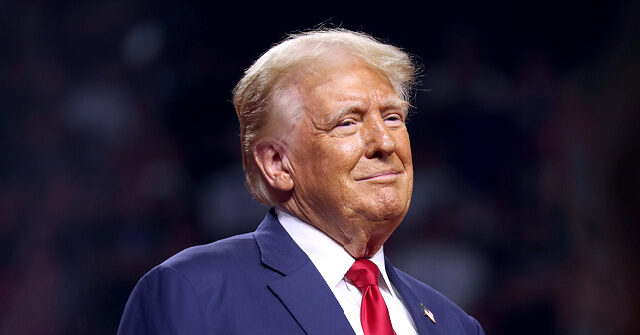A recent NPR/PBS News/Marist poll reveals a tightly contested presidential race between former President Donald Trump and current Vice President Kamala Harris. According to the poll, which surveyed 1,294 likely voters between September 27 and October 1, the candidates are nearly tied with Trump receiving 48 percent support and Harris slightly ahead at 50 percent. The results demonstrate the close nature of the race, with only one percent of voters supporting a third-party candidate and another one percent remaining undecided. The margin of error is ± 3.7 percentage points, making the race vulnerable to shifts as it progresses.
Though Harris maintains a slight overall lead compared to her September figures, where she stood at 51 percent and Trump at 48 percent, the dynamics of independent voters play a crucial role in the race. Trump appears to be gaining traction among independent voters, leading Harris by four points. The poll indicates that 50 percent of independents favor Trump, while 46 percent support Harris. This demographic is vital as independents are often seen as key swing voters, whose preferences can ultimately determine election outcomes.
A gender divide among independent voters complicates the picture. Independent men show a strong preference for Trump, supporting him 62 percent to Harris’s 36 percent, while independent women lean toward Harris with 58 percent support compared to Trump’s 35 percent. This division among independents is further reflected in the overall results, as male voters in general favor Trump by a margin of 57 percent to 41 percent. Conversely, female voters show a distinct preference for Harris at 58 percent to 40 percent, highlighting the ongoing significance of gender in electoral politics.
Trump’s lead is particularly pronounced among white working-class voters, an important demographic for his campaign. The poll shows Trump leading Harris by a staggering 62 percent to 36 percent among white individuals without a college education. This advantage holds true across gender lines within this group; white working-class women support Trump 55 percent to Harris’s 42 percent, while men show even stronger backing for Trump at a ratio of 70 percent to 29 percent. These figures indicate that Trump maintains a solid base within this demographic, which could be pivotal in a close election.
Conversely, college-educated white voters exhibit a strong preference for Harris, with support for her reaching 58 percent compared to Trump’s 40 percent. This trend is consistent across both genders within this demographic, as both college-educated women and men favor Harris 58 percent to 41 percent over Trump. This suggests that while Trump may dominate among working-class voters, Harris has secured critical support among more educated white voters, highlighting a divide that could impact the electoral landscape.
The NPR/PBS News/Marist poll underscores the complexity of the current political environment as the race enters its final stages. With a narrow margin between the candidates and significant divides among gender and educational backgrounds acting as influential factors, the dynamics of voter preference are in flux. As the campaign continues, both candidates will need to navigate these divides and strategically appeal to different voter groups to enhance their chances of success in the upcoming election. The evolving support among independents and white working-class voters, in particular, may be indicative of broader national trends that could shape the electoral result.

